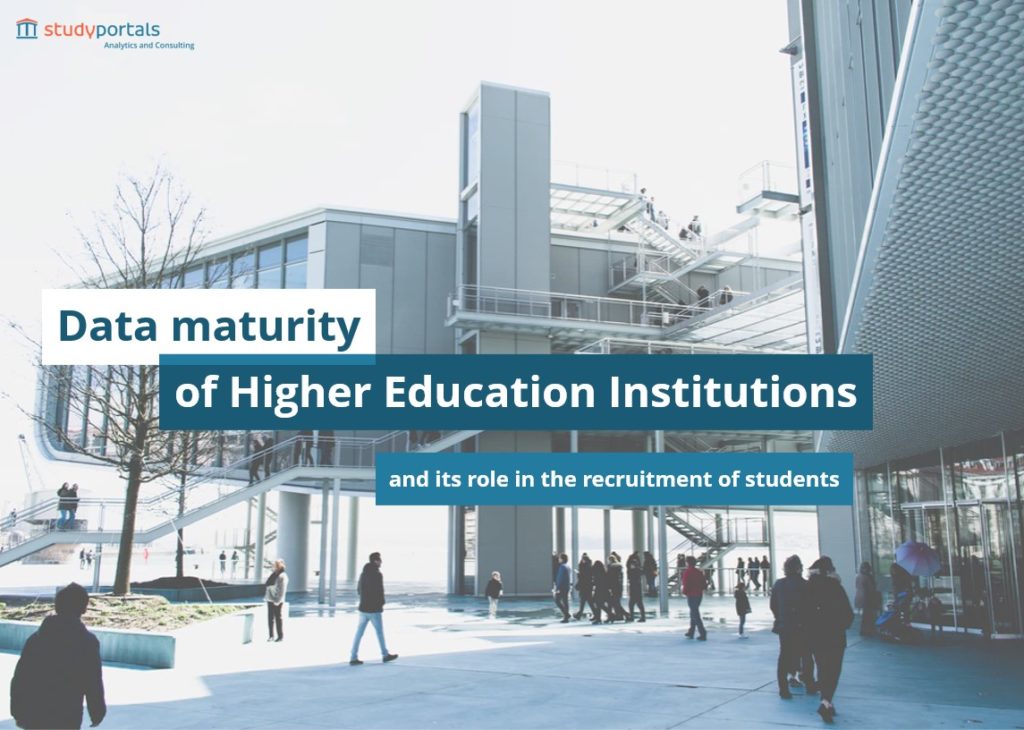Dr David Pilsbury: Time for the Higher Education Sector to stop deceiving itself about data
In a new report, Studyportals surveyed Higher Education Institutions (HEIs) around the globe to determine their data maturity level. Only 5% of Higher education institutions would rate themselves at the highest level of data maturity.
“Universities are way behind in exploiting this sort of intelligence compared to best demonstrated practice in other sectors,” says Dr David Pilsbury. Pilsbury was Deputy Vice-Chancellor, International, at Coventry University, where he was responsible for a 6-fold increase in overseas student recruitment, establishing the UK’s largest overseas collaborative delivery programme with over 20,000 students in more than 30 countries.
Pilsbury attributes sophisticated use of data analytics as a major reason why Coventry has been so successful, despite recruitment budgets not increasing significantly.
A proper data strategy is not expensive, he says, and the returns come quickly and concretely. “This is not something where you have to bet the farm” says Pilsbury. Unlike investing in expensive university infrastructure and hoping the students will come, for example, the investment needed is minimal. “If you work in partnership with service providers like Studyportals you can be sure to get benefit out of the investment. Even if you don’t go “all in” the benefits are significant and return on investment substantial. And if you commit to securing all the benefits it’s transformative.”
Studyportals Data maturity report also shows that despite universities holding a large amount of data, they are not fully exploiting the potential of this data.
The survey showed a clear correlation between data maturity and the impact of data in the institution. HEIs with higher data maturity levels see a bigger impact of data on outcomes, such as income generation.
“Data is the oil that powers the machine, even now where we rely on the market insight of recruitment professionals, in the future AI will be the engine and the driver exploiting massive student datasets, but whatever the situation, if you don’t get the data right, anything else that you try and do, will be flawed.”
There is a need for the sector to catch up to optimise data use, and data-driven strategies.
For Pilsbury, the lack of data maturity and data-driven strategies is a big risk for those institutions falling behind the curve.
“I do feel sorry for some institutions that simply don’t have a grip on their data and if that is combined with not having the appropriate strategy, those places are going to go out of business. – either disappear or end up in a forced marriage or a marriage of convenience, neither of which is very happy.”
The first step for the higher education industry might be recognising the issues with a lack of data maturity and becoming aware of the benefits data analysis can hold.
“The sector has a lot to be proud of but would serve itself better if it was a bit more humble and a bit more insightful about where it really sits on this data maturity line.”
Complete a quick self-assessment of your university to discover its data maturity level and benchmark it against other Higher Education Institutions (3 minutes)
Data maturity of Higher Education Institutions and its role in the recruitment of students. Studyportals Analytics and Consulting Team, August 2021
The report covers the detailed survey results of the following dimensions:
- purpose of data – how do HEIs utilise data?
- quality of data – what is the quality of data used by HEIs?
- data sources – where do HEIs source data from?
- data tools – which tools are used by HEIs?
- data culture of the institution – is the culture of HEIs data-oriented?






